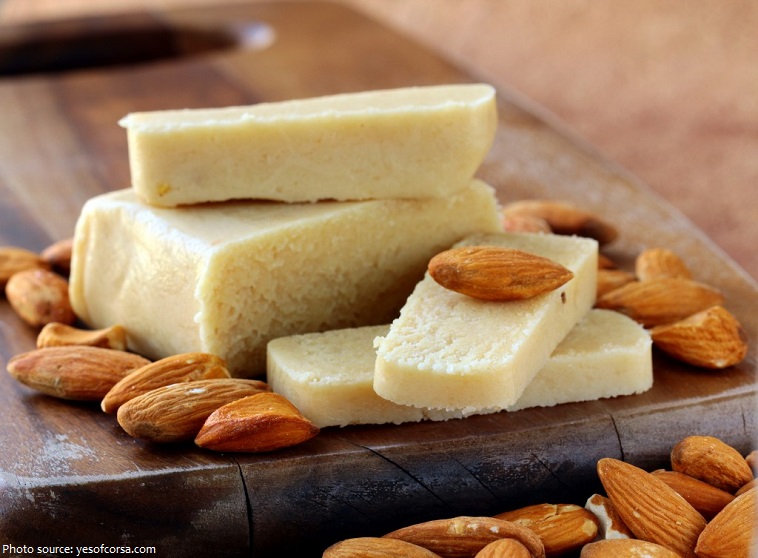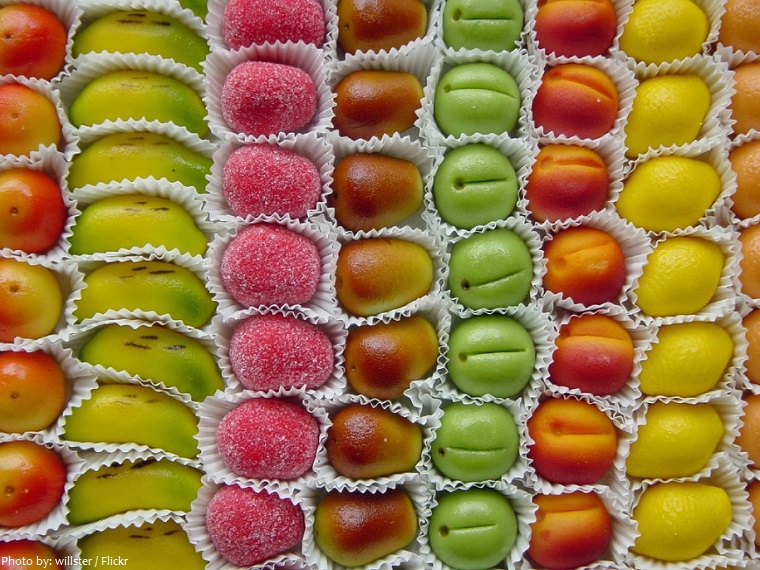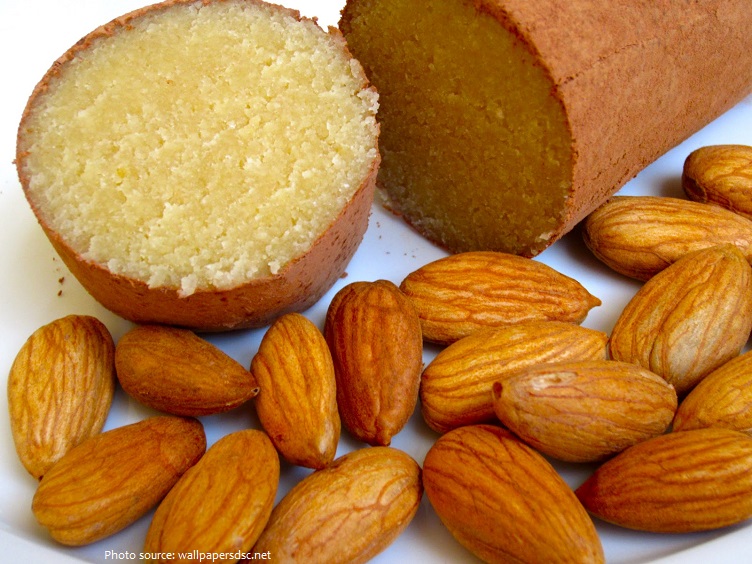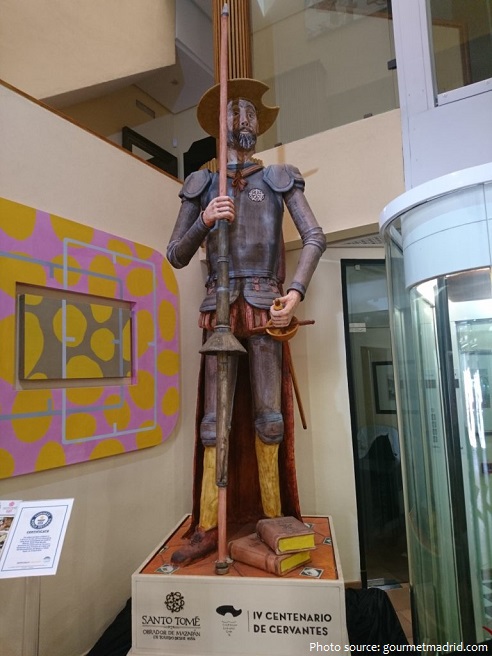Marzipan is a confection consisting primarily of sugar or honey and almond meal (ground almonds), sometimes augmented with almond oil or extract.
Soft marzipan is used as a filling in a variety of pastries and candies; that of firmer consistency is traditionally modeled into fanciful shapes, such as miniature fruits, vegetables, and sea creatures, and colored realistically.
Marzipan can also be used in biscuits or rolled into thin sheets and glazed for icing cakes, primarily birthday, wedding cakes and Christmas cakes.
Real high-quality marzipan is defined by the proportion of almonds and sugar: the greater the proportion of almonds, the better and more expensive is the marzipan.
Confectioners recognize two methods of making marzipan. The German variety is a mixture of almonds and sugar ground coarse and heated until dry; after cooling, glucose and icing sugar are added. French marzipan is not cooked, but sugar is boiled with water and added to the almonds to render a finer, more delicate texture and whiter color.
Marzipan has a sweet and long history, closely related to advent of almonds. Their exact ancestry in unknown, but almonds are thought to have originated in China and Central Asia. Explorers ate almonds while traveling the “Silk Road” between Asia and the Mediterranean.
The Persian physician Rhazes, who lived from 850 to 923, wrote a book extolling the almond and sugar mixture as a remedy for illnesses.
Although it is believed to have been introduced to Eastern Europe through the Turks, there is some dispute between Hungary and Italy over its origin.
Like all the substances having more or less healing qualities, marzipan also was originally made in pharmacies. More precisely, in the oldest continuously operating pharmacy of Europe – The Town Hall Pharmacy of Tallinn, which was first mentioned already in 1422.
The first people to consume marzipan were royalty and the rich rather than the poor. The figures made from marzipan sugar paste and jellies were presented at the end of a medieval feast.
In price lists of pharmacies from 1695 marzipan is included under the name of Panis Martius (also Marci Panis). There is also an order from the 17th century made by this pharmacy to a sculptor from Netherlands Arent Passer for stone moulds for marzipan. One of the moulds depicts the big coat of arms of Tallinn with lions and the other the small cross-shaped coat of arms. Both suited well for making nice presents to the aldermen.
The German name has largely ousted the original English name marchpane with the same apparent derivation: “March bread”. (The word marchpane occurs in Shakespeare’s Romeo and Juliet, Act 1, Scene 5, Line 9.) Marzapane is documented earlier in Italian than in any other language, and the sense “bread” for pan is Romance. The origin could be from the Latin term “martius panis”, which means bread of March.
Lübeck in Germany has often been described as the capital of marzipan and in the 1950s, the sweet confectionary became an everyday sweet item. The city’s manufacturers like Niederegger still guarantee their Marzipan to contain two thirds almonds by weight, which results in a juicy, bright yellow product.
In order to maintain quality standards, many countries regulate the percentage of almonds a recipe must have for it to be legally called “marzipan.” This discourages the use of apricot kernels as a cheap substitute for almonds.
The aroma and flavor of marzipan can partially be attributed to benzaldehyde, which is found naturally in almonds.
Marzipan is good for the brain activity, because almonds contain a lot of lecithin, which according to modern chemistry, stimulates the nerve cells.
Marzipan’s softness is a balance between the solid and liquid components. It should have a moisture content of less than 10%.
A Mozartkugel, is a popular, round sugar confection made of pistachio marzipan and nougat that is covered with dark chocolate.
The tallest marzipan sculpture is 3.59 m (11 ft 9 in) and was achieved by Junta de las Comunidades de Castilla la Mancha, Santo Tome Obrador, Asociacion de Fabricantes de Turrones y Mazapanes de la Provincia de Toledo and Stil Kommunikation (all Spain) in Toledo, Spain, on 23 April 2016. The sculpture represents the statue of Miguel de Cervantes’ ‘Don Quixote de la Mancha’.
The longest marzipan bar was 22 m 54 cm (73 ft 11 in) and was achieved by the children of Schuberts Minde Treatment Centre (Denmark), at Schuberts Minde Treatment Centre, in Ringkobing, Denmark, on 10 December 2011. In total 33 participants including children and adults helped to makes the marzipan bar. The complete dimensions of the bar were between 11.2 cm and 12.1 cm in width, 4.8 cm and 6.2 cm.
The world’s largest pistachio marzipan sweet weighed 4.1984 tonnes (9,255 lb 14 oz) and was made by 225 chefs in an event organised by Spacetel Syria at Hamadanya Stadium, Aleppo, Syria on 1 July 2003. Other dimensions are: Length 16.4 m (53 ft 9 in), width 12.2 m (40 ft 0.3 in), thickness 1.6 cm (0.6 in).






